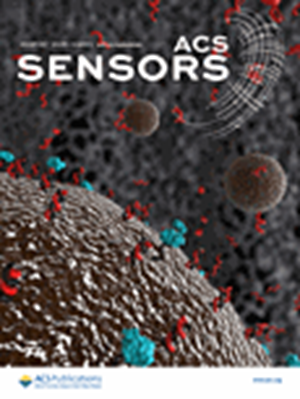一种高灵敏度检测HPV DNA的CRISPR/ cas12a辅助SERS纳米传感器
IF 8.2
1区 化学
Q1 CHEMISTRY, ANALYTICAL
引用次数: 0
摘要
缺乏及时有效的筛查和诊断是低收入国家和资源有限地区宫颈癌死亡率高的一个主要因素。因此,开发一种快速、灵敏、易于部署的HPV DNA诊断工具至关重要。在本研究中,我们将CRISPR/Cas12a系统与表面增强拉曼散射(SERS)技术相结合,提出了一种新的HPV16和HPV18的高灵敏度和高特异性检测方法。该方法利用CRISPR/Cas12a系统的反式裂解活性,在靶DNA存在的情况下裂解生物素修饰的球形核酸(Biotin-SNA),释放游离的生物素-DNA。释放的生物素- dna优先结合链霉亲和素修饰磁珠(SAV-MB),减少SAV-MB对生物素- sna的捕获,从而显著提高检测灵敏度。该方法可在37°C下高效工作,无需热循环,因此具有即时诊断的潜力。使用标准DNA样品,我们证明了这种生物传感器在95分钟内的检测限低至209拷贝/μL和444拷贝/μL。当与重组酶聚合酶扩增(RPA)结合使用时,传感器显示出更高的灵敏度,可以在大约50分钟内检测到低至1拷贝/μL的目标DNA。此外,临床样品验证证实了该方法的可行性和实用性。这种新型的基于sers的传感器为宫颈癌的预防和检测提供了一种新的有效工具。本文章由计算机程序翻译,如有差异,请以英文原文为准。
A CRISPR/Cas12a-Assisted SERS Nanosensor for Highly Sensitive Detection of HPV DNA.
The lack of timely and effective screening and diagnosis is a major contributing factor to the high mortality rate of cervical cancer in low-income countries and resource-limited regions. Therefore, the development of a rapid, sensitive, and easily deployable diagnostic tool for HPV DNA is of critical importance. In this study, we present a novel high-sensitivity and high-specificity detection method for HPV16 and HPV18 by integrating the CRISPR/Cas12a system with surface-enhanced Raman scattering (SERS) technology. This method leverages the trans-cleavage activity of the CRISPR/Cas12a system, which cleaves biotin-modified spherical nucleic acids (Biotin-SNA) in the presence of target DNA, releasing free Biotin-DNA. The released Biotin-DNA preferentially binds to streptavidin-modified magnetic beads (SAV-MB), reducing the capture of Biotin-SNA by SAV-MB and thereby significantly enhancing detection sensitivity. This method offers the potential for point-of-care diagnostics as it operates efficiently at 37 °C without the need for thermal cycling. Using standard DNA samples, we demonstrated that this biosensor achieved detection limits as low as 209 copies/μL and 444 copies/μL within 95 min. When combined with recombinase polymerase amplification (RPA), the sensor demonstrated enhanced sensitivity, enabling detection of target DNA at concentrations as low as 1 copy/μL within approximately 50 min. Furthermore, validation with clinical samples confirmed the feasibility and practical applicability of this method. This novel SERS-based sensor offers a new and effective tool in the prevention and detection of cervical cancer.
求助全文
通过发布文献求助,成功后即可免费获取论文全文。
去求助
来源期刊

ACS Sensors
Chemical Engineering-Bioengineering
CiteScore
14.50
自引率
3.40%
发文量
372
期刊介绍:
ACS Sensors is a peer-reviewed research journal that focuses on the dissemination of new and original knowledge in the field of sensor science, particularly those that selectively sense chemical or biological species or processes. The journal covers a broad range of topics, including but not limited to biosensors, chemical sensors, gas sensors, intracellular sensors, single molecule sensors, cell chips, and microfluidic devices. It aims to publish articles that address conceptual advances in sensing technology applicable to various types of analytes or application papers that report on the use of existing sensing concepts in new ways or for new analytes.
 求助内容:
求助内容: 应助结果提醒方式:
应助结果提醒方式:


